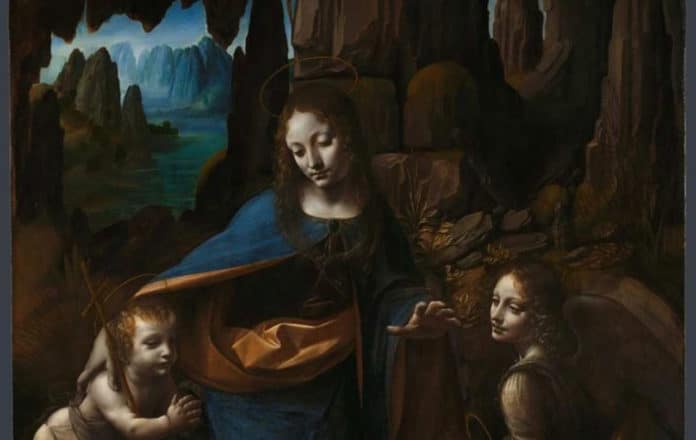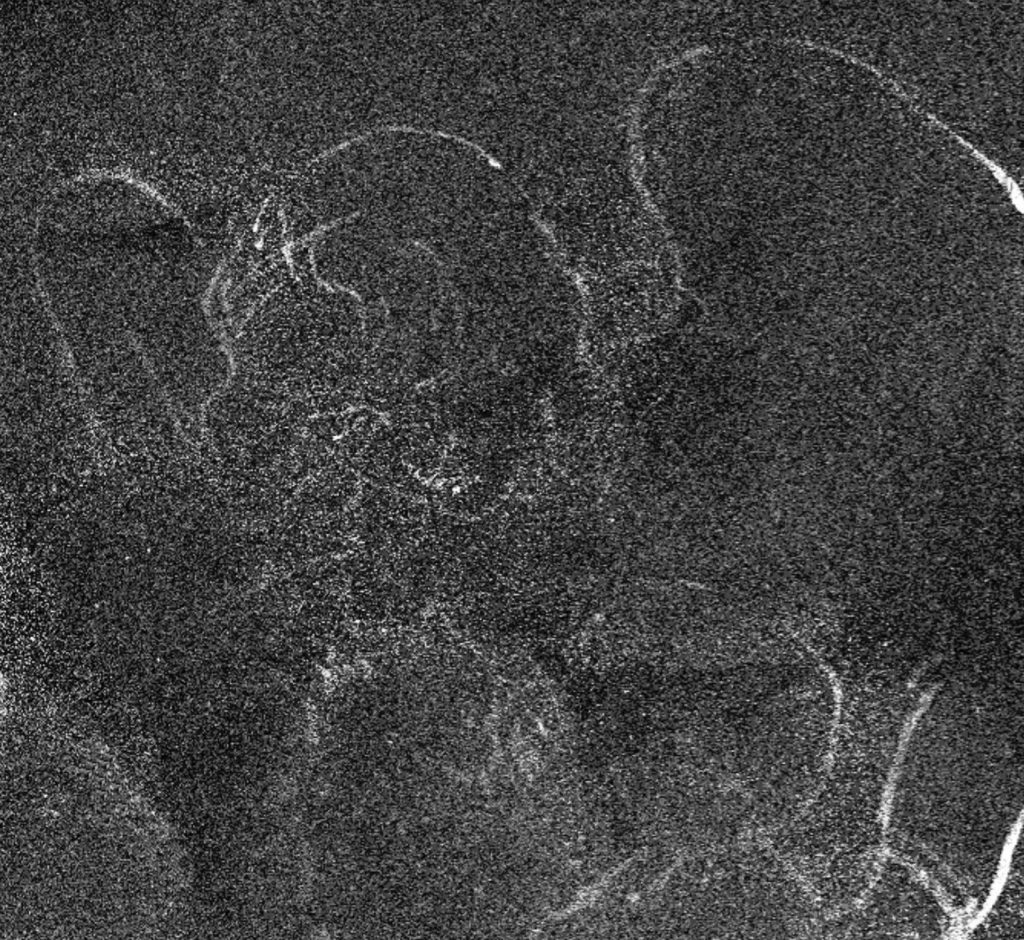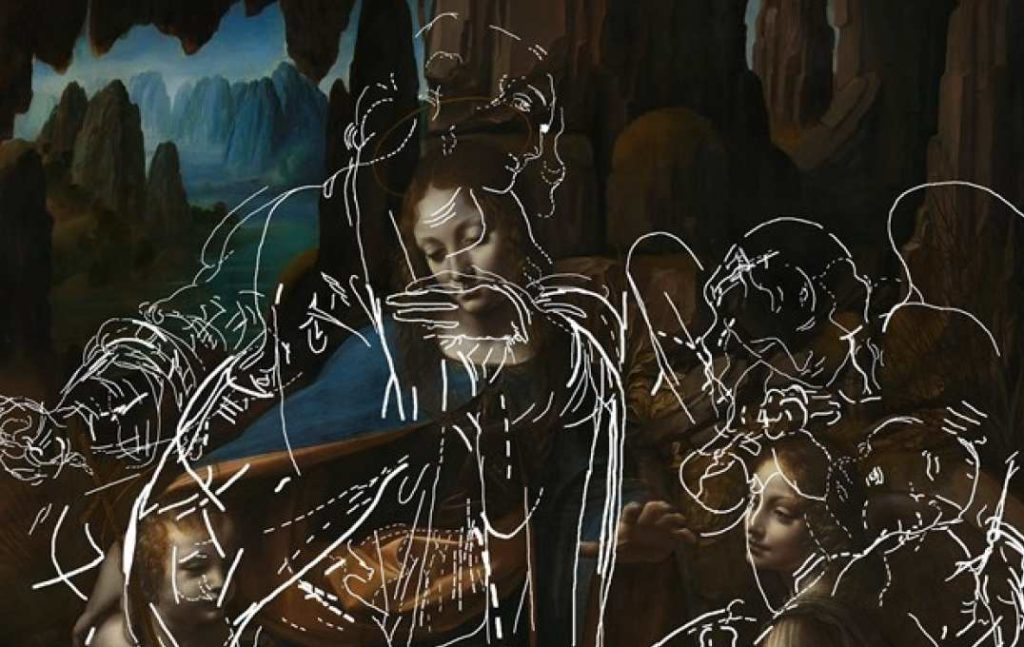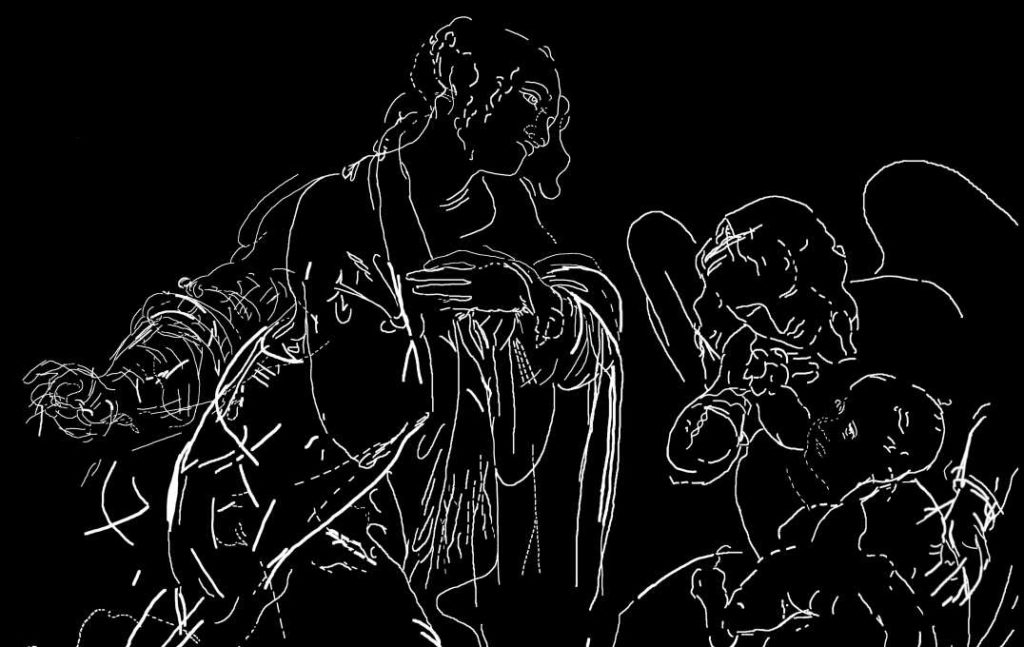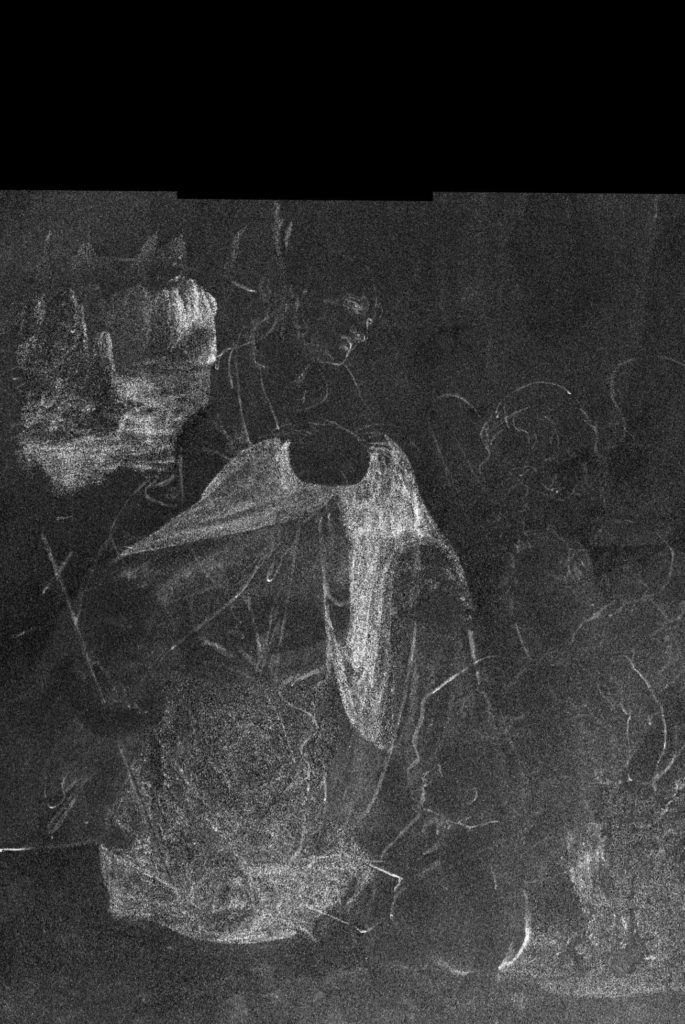The Virgin of the Rocks (sometimes the Madonna of the Rocks) is the name used for two Leonardo da Vinci’s paintings, of a similar subject, and of a composition which is almost identical aside from two important details. Both paintings show the Madonna and Christ Child with the newborn child John the Baptist and an angel in a rocky setting, which gives the artistic creations their standard name.
Now, scientists from the Imperial College London and National Gallery applied a new algorithm combined with a technique called macro X-ray fluorescence (MA-XRF) scanning to visualize hidden drawings beneath Leonardo Da Vinci’s Virgin of the Rocks. Scientists wanted to determine chemical elements within paintings.
In doing so, they uncovered the hidden figures that Leonardo originally drew before changing his design to the one that he eventually painted. These included abandoned images of an angel and the Infant Christ.
MA-XRF non-invasively scans each pixel of the painting to detect different chemical elements within the materials Leonardo used in the painting.
Imperial College London’s Professor Pier Luigi Dragotti said, “Each pixel contained different amounts of each element, within various layers. We analyzed each pixel individually before combining them to see all the underdrawings in the painting. This revealed a much sharper image of the angel and baby.”
National Gallery’s Dr. Catherine Higgitt said, “Before, we were getting very weak signals from the zinc within the painting due to its overlap with other elements, but the algorithm has given us more confidence in the signals that relate to the underdrawing. It’s been a rewarding experience to learn about and combine our different fields. The findings could also help us to reach out to more varied and unexpected audiences.”
According to scientists, the algorithm could be applied to data from other paintings, making analysis of artworks more user-friendly and letting data be accessed more easily by, for example, art students and galleries.
Scientists are now planning to combine imaging techniques and artificially intelligent algorithms to extract more hidden information from paintings.
The project was sponsored by the Engineering and Physical Sciences Research Council.
